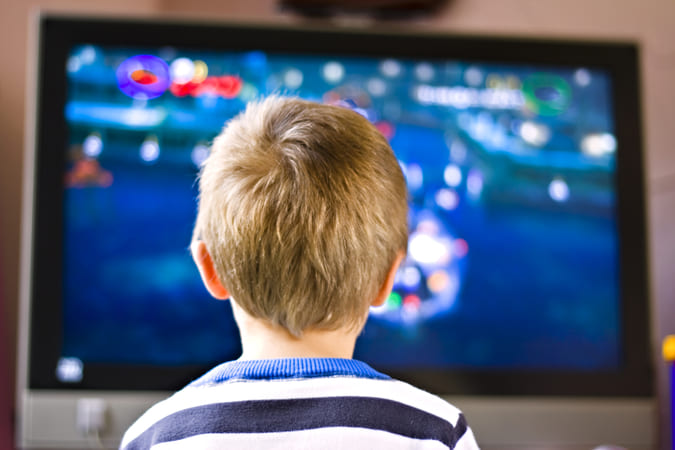Over the past two decades, the number of brand logos recognizable by children aged 6-12 has doubled, with a staggering 80% now able to identify over 100 brands. This alarming statistic underscores the increasing influence of commercial brands on the youngest members of our society.
Historical Context of Branding Towards Children
Branding towards children is not a new phenomenon. From the early days of comic book advertisements to Saturday morning cartoon commercials, children have always been a lucrative target audience. However, the intensity and methods of these marketing strategies have evolved dramatically. In the 1970s, an average child saw approximately 20,000 commercials a year. Fast forward to today, and that number has skyrocketed, thanks to the omnipresence of digital platforms.
The Evolution of Child-Targeted Marketing
The journey of child-targeted marketing has been fascinating, evolving in tandem with technological and societal changes. In the early 20th century, advertisements aimed at children were primarily found in comic books, radio shows, and later, on television during specific children’s programming slots. Brands like cereal companies and toy manufacturers became household names through catchy jingles and memorable mascots.
However, the dawn of the digital age brought about a seismic shift. The advent of the internet, followed by the proliferation of smartphones and tablets, opened up a new frontier for marketers. Websites with child-friendly games, known as ‘advergames,’ became popular tools to introduce kids to brands subtly.
Despite age restrictions, social media platforms saw a surge in younger users, and brands were quick to capitalize with influencer partnerships and interactive content.
Streaming platforms, replacing traditional TV for many, allowed for more targeted ads, often based on viewing habits and preferences. The transition from passive viewing on TV to active engagement online marked a significant change in how children interacted with and perceived advertisements.
Modern Tactics: Digital Platforms and Their Role
The digital age has ushered in a new era of brand engagement. Children are no longer passive content consumers but active participants, interacting with brands on social media, mobile apps, and online games. Advertisers have taken note of creating tailored content that blurs the line between entertainment and advertisement.
For instance, branded mobile games or “advergames” are designed to engage children while subtly promoting a product or service. These games are often free, making them easily accessible to a wide audience.
How Brands Shape Children’s Perceptions
The constant barrage of branded content profoundly affects a child’s psyche. Brands are not just logos or products; they have personalities, values, and stories. Children, with their impressionable minds, often internalize these narratives. Over time, these commercial messages can influence individual perceptions and broader family dynamics as children and parents balance consumer influence and family values.
For instance, a study from Research Gate finds that children who frequently engaged with a particular toy brand were likelier to associate specific personality traits, like “bravery” or “intelligence,” with that brand.
The Ethical Dilemma
The commercialization of childhood is not without its critics. Many argue that children, especially those under the age of 12, are not equipped to understand the persuasive intent of advertisements, making them particularly vulnerable. This vulnerability raises questions about the morality of targeting such a young demographic.
Parents, too, find themselves in a quandary. Their parenting styles play a pivotal role in mediating their children’s exposure to commercial content; the omnipresence of digital devices makes complete oversight challenging. The onus often falls on them to educate their children about the difference between content and commercials, which has become increasingly blurred.
Regulatory bodies worldwide have implemented guidelines and restrictions on child-targeted advertising. For instance, certain countries have banned advertising junk food during children’s programming hours. However, the rapid pace of technological advancement often outstrips the speed of legislation, leaving gaps that marketers can exploit.
Global Perspective
The approach to child-targeted marketing varies widely globally and is influenced by cultural norms, societal values, and regulatory environments.
In Scandinavian countries, for example, there are stringent regulations in place. Sweden bans all advertising directed at children under the age of 12, while Norway prohibits advertisements during children’s programs.
Contrastingly, in many Asian countries, the line between education and advertisement is often blurred. Brands collaborate with educational content creators to integrate their products into learning materials, making the commercial aspect less overt.
In the United States, with its robust advertising industry, some parents adopt intensive monitoring practices in an attempt to shield their children from pervasive commercial influences. The Children’s Online Privacy Protection Act (COPPA) is one such regulation that aims to protect children’s privacy online.
Regardless of the region, a common thread emerges the challenge of balancing commercial interests with the well-being and rights of children. As globalization continues to shrink the world, exchanging ideas and strategies among countries could pave the way for more unified approaches in the future.
The commercialization of childhood is a multifaceted issue with both societal and psychological implications. Brands continue to weave themselves into the fabric of children’s daily lives.






